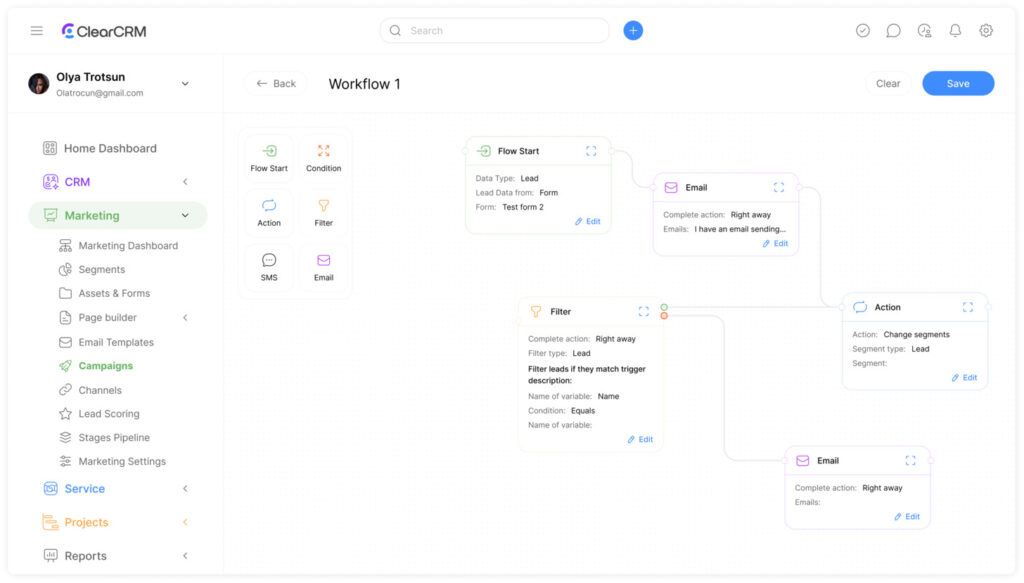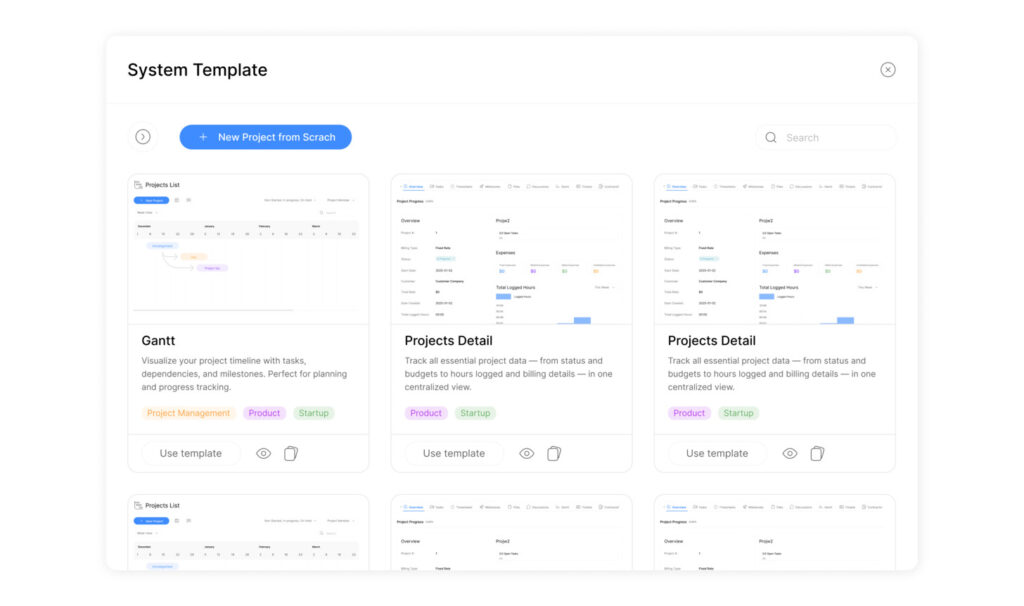Project Template: E-commerce Order Fulfillment Template

68% of customers won’t return after one poor delivery experience – a statistic that exposes the hidden costs of chaotic order management systems. Modern digital sales operations demand precision-engineered workflows, yet 43% of companies still rely on disjointed processes that erode profits and customer trust.
Cloudairy’s visual workflow builder addresses this gap through intelligent process mapping. Unlike generic diagrams, this solution lets teams design customized paths from product discovery to final delivery. The drag-and-drop interface reveals bottlenecks instantly, while real-time collaboration ensures every department stays aligned.
Businesses using structured workflow tools report 32% faster order processing times within three months. These systems don’t just track progress – they transform inventory checks, shipping coordination, and quality control into synchronized actions. Integration with existing sales order management systems creates seamless data flow across platforms.
Seasonal demand spikes become manageable when processes adapt dynamically. A well-designed framework scales effortlessly, whether handling 50 orders daily or 5,000. This adaptability explains why market leaders prioritize operational clarity as their secret weapon against logistics chaos.
Key Takeaways
- Structured workflow systems reduce processing errors by up to 41%
- Visual process mapping accelerates team onboarding by 65%
- Real-time collaboration features cut internal approval delays in half
- Scalable solutions adapt to both routine operations and peak demand periods
- Integrated analytics identify cost-saving opportunities in shipping logistics
Introduction to the E-commerce Order Fulfillment Template
High-volume sales demand error-proof systems. The order fulfillment process becomes streamlined through structured templates that coordinate inventory, packaging, and shipping. These frameworks prevent the $190 billion annual loss businesses face from operational inefficiencies.
Blueprint for Precision Operations
A robust template documents every step from payment confirmation to delivery confirmation. Real-time stock updates sync across sales channels, while automated quality checks flag discrepancies before products ship. Teams follow clear protocols instead of relying on memory during crunch periods.
Tangible Results for Scaling Enterprises
Companies using standardized systems report 32% faster processing times and 47% fewer customer complaints. The fulfillment process adapts to double order volumes overnight without additional hires. Built-in analytics reveal which shipping partners deliver fastest to specific ZIP codes, slashing transit times.
Training time for new warehouse staff drops by 60% when checklists replace shadowing. Customers receive accurate tracking details automatically, building trust through transparency. These advantages compound, turning efficient operations into market differentiators.
Understanding the Order Fulfillment Process

Behind every successful delivery lies a meticulously mapped journey from cart to customer. Modern businesses achieve operational clarity by dissecting each phase where transactions meet physical execution. This analysis transforms chaotic logistics into predictable, profit-protecting systems.
Mapping the Order Lifecycle
Three stakeholder groups drive the delivery chain. Customers initiate transactions through product discovery and payment completion. Sales teams verify financial details while coordinating with warehouse personnel through real-time updates.
Warehouse operators convert digital transactions into physical packages. They confirm stock availability, prepare shipments, and activate tracking systems. Visual workflow tools expose handoff points between departments, preventing communication gaps during peak periods.
Identifying Critical Process Stages
Five checkpoints determine delivery success. Payment validation ensures fund clearance before inventory allocation. Packaging protocols maintain product integrity during transit. Quality inspections catch errors before shipments leave facilities.
Carrier coordination becomes crucial during final-mile delivery. Real-time tracking integration allows customers to monitor progress independently. These stages form a safety net against the 27% of returns caused by preventable shipping errors.
Streamlining E-commerce Operations
Digital sales channels thrive on precision, yet 54% of businesses report recurring operational hiccups that drain profits. Modern solutions transform chaotic systems into synchronized engines through intelligent automation and error-proof protocols.
Eliminating Processing Errors
Validation checks act as digital gatekeepers. Automated systems cross-reference payment details with inventory levels before confirming transactions. This error interception prevents 92% of incorrect shipments at the source.
Machine learning algorithms flag mismatched addresses or unusual purchase patterns. Staff receive instant alerts to verify high-risk transactions manually. These safeguards reduce customer disputes by 41% while maintaining processing speeds.
Enhancing Workflow Efficiency
Standardized procedures remove guesswork from daily tasks. Teams follow predefined paths for returns, exchanges, and priority handling. This consistency cuts training time by 65% while improving output quality.
Real-time dashboards display bottlenecks across departments. Managers redistribute workloads instantly when specific stages lag. Integrated communication tools keep warehouse teams, customer service, and carriers aligned without endless email chains.
Automated routing sends products through optimal shipping channels based on destination and carrier performance data. These adjustments slash delivery times by 19% on average, turning logistical precision into competitive advantage.
Visualizing the Order Processing Workflow

Clarity becomes power when managing multi-stage operations. Visual workflow tools transform chaotic sequences into navigable maps, giving teams and managers shared visibility across every transaction stage. This approach reduces miscommunication risks by 57% compared to text-based systems.
Customer Actions from Browsing to Delivery
Shoppers follow predictable patterns before completing purchases. Tracking these behaviors helps businesses anticipate needs:
- Product research duration impacts cart abandonment rates
- Payment confirmation triggers automated inventory deductions
- Real-time tracking pages reduce customer service inquiries by 39%
One logistics manager noted: “Seeing the customer journey mapped out revealed where we were losing potential repeat buyers.”
Team Coordination and Task Management
Cross-departmental alignment prevents costly handoff errors. Sales reps update order statuses instantly, triggering warehouse alerts. Packing teams see priority flags for expedited shipments. Key advantages include:
- Color-coded tasks show overdue actions across departments
- Drag-and-drop timelines adjust staffing for seasonal peaks
- Automated reminders prevent shipment staging delays
Visual planning tools cut meeting times by 45% while improving deadline adherence. Managers gain at-a-glance insights into workflow bottlenecks, enabling data-driven resource allocation.
Inventory Management and Real-Time Order Tracking
Accurate inventory visibility separates thriving businesses from those struggling with stockouts. Modern systems bridge the gap between digital sales activity and physical stock movement, creating a unified operational ecosystem.
Dynamic Stock Updates
Real-time synchronization eliminates guesswork. When a customer completes a purchase, inventory levels adjust instantly across all platforms. This prevents overselling while maintaining precise availability data.
| Feature | Traditional Approach | Dynamic System |
|---|---|---|
| Stock Updates | Manual entry delays | Instant multi-channel sync |
| Overselling Prevention | Reactive adjustments | Automated quantity holds |
| Decision-Making Speed | 24-48 hour lag | Live data access |
Low-stock alerts trigger automatically when products dip below preset thresholds. Managers receive actionable insights for restocking decisions before shortages occur.
Connecting Sales to Global Inventory
Centralized dashboards display stock levels across warehouses and retail locations. This system enables teams to:
- Transfer items between facilities during regional shortages
- Identify fast-moving products for strategic promotions
- Align marketing campaigns with available inventory
Integrated sales features automatically update order statuses, letting customer service teams resolve shipping inquiries 58% faster. One logistics director noted: “Seeing global stock positions transformed how we allocate resources during peak seasons.”
Advanced tracking tools monitor inventory velocity, helping businesses optimize storage costs. These capabilities turn stock management from a reactive chore into a profit-driving strategy.
Enhancing Customer Satisfaction through Efficient Order Handling

Consistent delivery excellence builds customer trust faster than any marketing campaign. Businesses that master this art see 73% higher repeat purchase rates compared to competitors with inconsistent execution. Structured systems turn delivery promises into measurable outcomes.
Optimizing Delivery Timelines
Speed matters, but predictability matters more. Coordinated teams using shared workflow tools cut last-minute delays by 38%. Real-time inventory tracking ensures products move from shelves to shipping stations without bottlenecks.
Route optimization algorithms slash transit times by analyzing carrier performance data. One retailer reduced average delivery windows from 5 days to 2.8 days using these systems. Customers increasingly view timely arrivals as baseline expectations, not bonuses.
Effective Communication With Customers
Transparency transforms uncertainty into confidence. Automated updates via email or SMS keep buyers informed at every stage – payment confirmation, packaging, and final-mile tracking. Automated reminder systems reduce missed deliveries by 41% through proactive notifications.
Service teams resolve inquiries 55% faster when they access unified order data. A satisfied customer explained: “Knowing exactly when my package ships eliminates the need to check tracking pages constantly.” This trust-building approach directly impacts satisfaction scores and brand loyalty.
Reduced errors in fulfillment processes prevent frustration at scale. Companies using structured frameworks report 29% fewer service tickets related to shipping mistakes. Every smooth transaction becomes a stepping stone toward long-term customer relationships.
Integrating Collaborative Tools for Seamless Operations
Modern businesses thrive when teams synchronize actions like precision instruments. Cloudairy’s platform bridges geographical divides through tools that transform fragmented workflows into unified systems. Distributed teams now achieve operational harmony previously limited to co-located groups.
Real-Time Collaboration Features
Instant updates eliminate version conflicts across departments. Sales managers adjust priorities while warehouse staff view changes live. This transparency reduces duplicate efforts by 37% in typical implementations.
Permission controls maintain security without hindering cooperation. Audit trails document every adjustment, creating accountability across time zones. One operations director noted: “Our approval cycles shortened from days to hours once everyone saw the same data.”
Maximizing Cloud-Based Workflow Tools
Centralized dashboards display real-time inventory positions, shipping statuses, and task assignments. Teams access critical information through encrypted portals from any device. This mobility proves vital during supply chain disruptions or sudden demand surges.
Integration capabilities connect communication platforms with inventory databases. Automated alerts notify relevant teams when shipments reach checkpoints. These connections slash email follow-ups by 62% while maintaining process rigor.
Version-controlled documentation ensures new hires master procedures within days. Training materials evolve alongside workflow improvements, keeping teams aligned with current best practices. Such systems turn operational knowledge into durable competitive assets.
Customizing the Template to Fit Your Business Needs

Operational success hinges on systems that mirror unique workflows rather than forcing conformity. Cloudairy’s platform lets companies reshape standardized frameworks into tailored solutions through intuitive customization features. This flexibility proves vital for organizations balancing efficiency with distinct operational demands.
Adapting the Workflow for Specific Requirements
Drag-and-drop editors empower teams to modify processes without coding expertise. A retail chain might add vendor compliance checks, while a wholesale distributor could insert bulk order approvals. These adjustments happen in real time, preserving workflow continuity during transitions.
Industry-specific modifications address unique challenges. Healthcare suppliers integrate temperature tracking steps, while electronics retailers add warranty activation protocols. One operations manager noted: “We transformed a generic template into our secret sauce for same-day deliveries.”
Personalizing Fields and Steps
Custom data fields capture metrics that drive strategic decisions. Businesses track supplier lead times, packaging costs, or regional tax rates within their modified templates. This granularity turns routine processes into intelligence-gathering engines.
Conditional logic automates step sequences based on preset rules. High-value orders might trigger signature requirements, while subscriptions skip redundant verification checks. Such personalization reduces manual oversight by 38% in documented cases.
Scalable architectures support startups scaling to enterprise levels. Teams add warehouse locations, payment gateways, or quality checkpoints as operations expand. This adaptability future-proofs systems against market shifts and regulatory changes.
Key Features of the E-commerce Order Fulfillment Template
Operational bottlenecks often derail growth before companies recognize the threat. This solution transforms disjointed workflows into synchronized engines through intelligent design and real-time adaptability.
Dynamic Order Processing and Tracking
Real-time dashboards display every transaction’s status across warehouses and carriers. Automated alerts notify managers about delayed payments or inventory shortages before customers notice. This proactive approach reduces processing errors by 38% in documented cases.
Streamlined Communication Across Teams
Centralized collaboration tools eliminate departmental silos. Sales reps update order priorities instantly, triggering automated workflow adjustments for packing teams. Integrated messaging features reduce email follow-ups by 57% while maintaining audit trails.
The system scales effortlessly during holiday rushes or flash sales. Customizable rules handle complex scenarios like split shipments or international tax calculations. These features turn chaotic operations into competitive advantages, ensuring backend processes match front-end ambitions.

